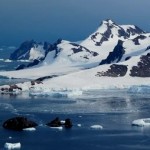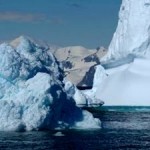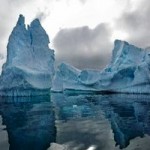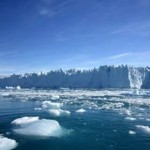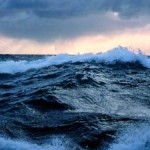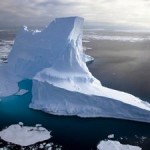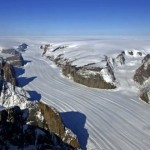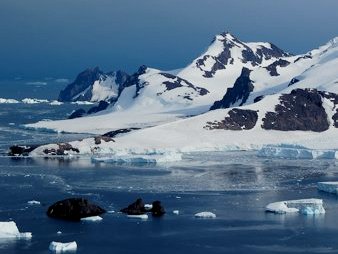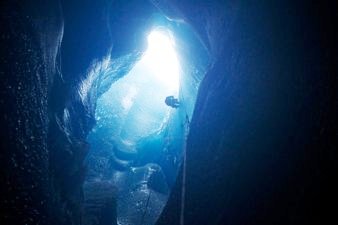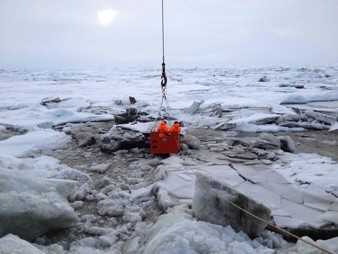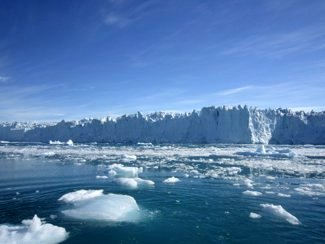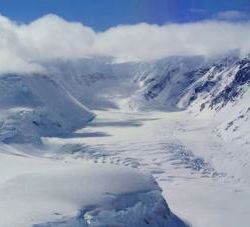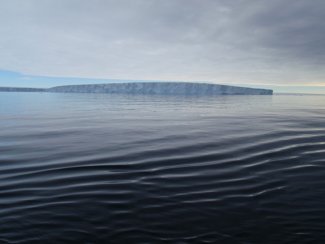
A new study published in Science this month suggests the thinning of Pine Island Glacier in West Antarctica is much more susceptible to climatic and ocean variability than at first thought. Observations by a team of scientists at British Antarctic Survey (BAS), and other institutions, show large fluctuations in the ocean heat in Pine Island Bay. The team discovered that oceanic melting of the ice shelf into which the glacier flows decreased by 50 per cent between 2010 and 2012, and this may have been due to a La Ninã weather event.
Pine Island Glacier has thinned continuously during past decades driven by an acceleration in its flow. The acceleration is thought to be caused by thinning of the floating ice shelf created as the glacier slides into the sea. Understanding the processes driving ice shelf thinning and the glacier’s response is key to assessing how much it will contribute to rising sea levels.
It’s now known that much of the thinning is due to a deep oceanic inflow of Circumpolar Deep Water (CDW) on the continental shelf neighbouring the glacier. This warmer water then makes its way into a cavity beneath the ice shelf melting it from below.
The passage of this warmer water was made easier by the unpinning of the ice shelf from an underwater ridge. The ridge had, in effect, acted as a wall preventing warmer water from getting to the thickest part of the shelf. This ungrounding event was one of the major driving forces behind the glacier’s rapid change.
In 2009, a higher CDW volume and temperature in Pine Island Bay contributed to an increase in ice shelf melting compared to the last time measurements were taken in 1994. But observations made in January 2012, and reported now in Science, show that ocean melting of the glacier was the lowest ever recorded. The top of the thermocline (the layer separating cold surface water and warm deep waters) was found to be about 250 metres deeper compared with any other year for which measurements exist.
This lowered thermocline reduces the amount of heat flowing over the ridge. High resolution simulations of the ocean circulation in the ice shelf cavity demonstrate that the ridge blocks the deepest ocean waters from reaching the thickest ice. So its presence enhances the ice shelf’s sensitivity to climate variability since any changes in the thermocline can alter the amount of heat filtering through.
The fluctuations in temperature recorded by the team may be explained by particular climatic conditions. In January 2012, the dramatic cooling of the ocean around the glacier is believed to be due to an increase in easterly winds caused by a strong La Ninã event in the tropical Pacific Ocean. Normally, the winds flow from the west.
The observations suggest there is a complex interplay between geological, oceanographic and climatic processes. The study stresses the importance of both local geology and climate variability in ocean melting in this region.
Lead author, Dr. Pierre Dutrieux, from British Antarctic Survey (BAS), said, “We found ocean melting of the glacier was the lowest ever recorded, and less than half of that observed in 2010. This enormous, and unexpected, variability contradicts the wide-spread view that a simple and steady ocean warming in the region is eroding the West Antarctic Ice Sheet. These results demonstrate that the sea level contribution of the ice sheet is influenced by climatic variability over a wide range of time scales.”
Co-author, Professor Adrian Jenkins, also from BAS, added, “It is not so much the ocean variability, which is modest by comparison with many parts of the ocean, but the extreme sensitivity of the ice shelf to such modest changes in ocean properties that took us by surprise. That sensitivity is a result of a submarine ridge beneath the ice shelf that was only discovered in 2009 when an Autonomous Underwater Vehicle mapped the seabed beneath the ice. These new insights suggest that the recent history of ice shelf melting and thinning has been much more variable than hitherto suspected and susceptible to climate variability driven from the tropics.”
The research was conducted by scientists from the British Antarctic Survey, the Korea Polar Research Institute, the University of Washington, Seattle and the Alfred Wegener Institute for Polar and Marine Research.
Details of the Study:
“Strong Sensitivity of Pine Island Ice Shelf Melting to Climatic Variability” by Pierre Dutrieux, Jan De Rydt, Adrian Jenkins, Paul R. Holland, Ho Kyung Ha, Sang Hoon Lee, Eric Steig, Qinghua Ding, Povl Abrahamsen and Michael Schröder is published in Science Express
URL: http://www.sciencemag.org/content/343/6167/174.abstract
Source: BAS.
La Ninã is an ocean/atmosphere phenomenon which has the opposite effect to El Ninõ. Sea surface temperatures in the tropics tend to be lower during a La Ninã event.
British Antarctic Survey (BAS), a component of the Natural Environment Research Council (NERC), delivers and enables world-leading inter-disciplinary research in the Polar Regions. Its skilled science and support staff based in Cambridge, Antarctica and the Arctic, work together to deliver research that uses the Polar Regions to advance understanding of Earth as a sustainable planet. Through its extensive logistic capability and know-how, BAS facilitates access for the British and international science community to the UK polar research operation. Numerous national and international collaborations, combined with an excellent infrastructure help sustain a world leading position for the UK in Antarctic affairs. For more information, visit www.antarctica.ac.uk.

